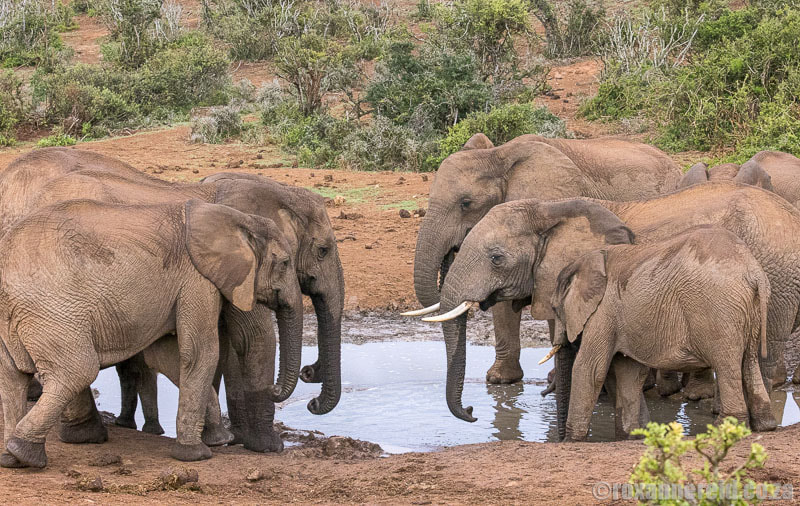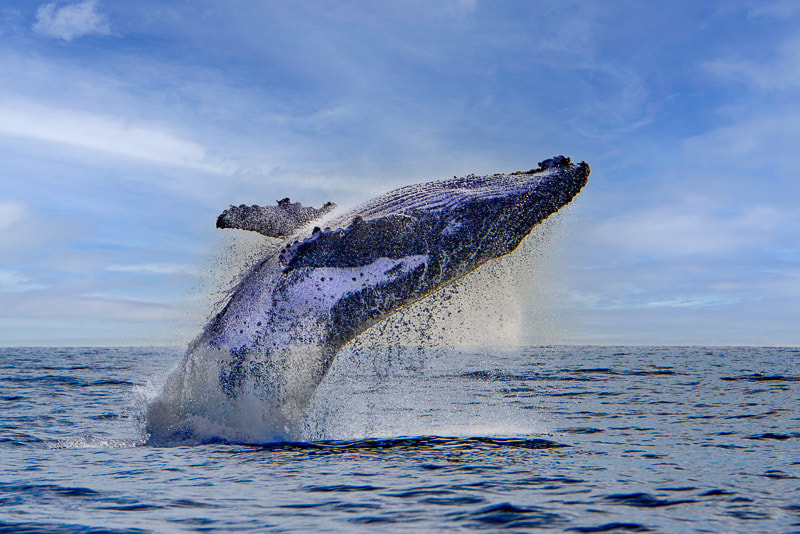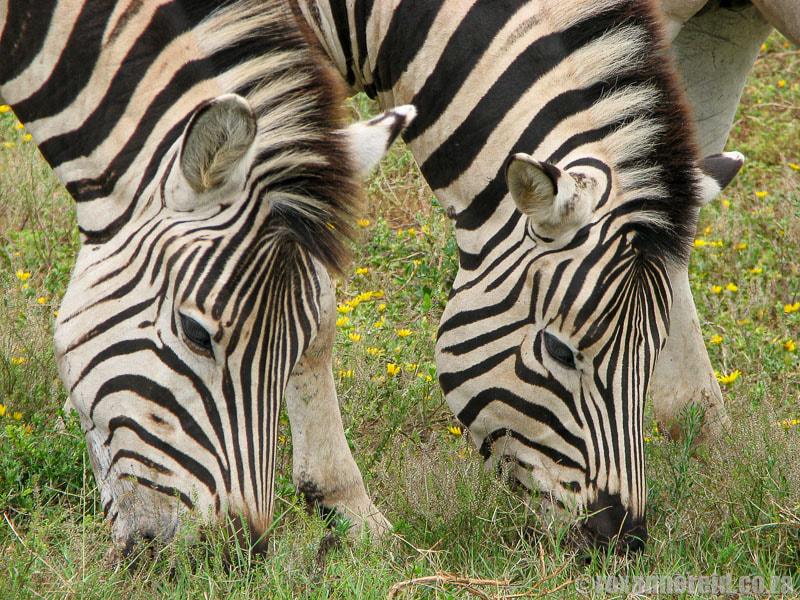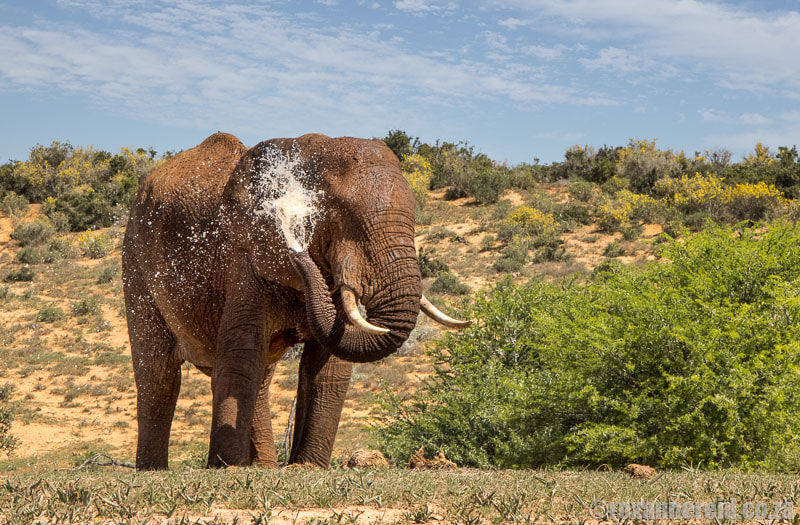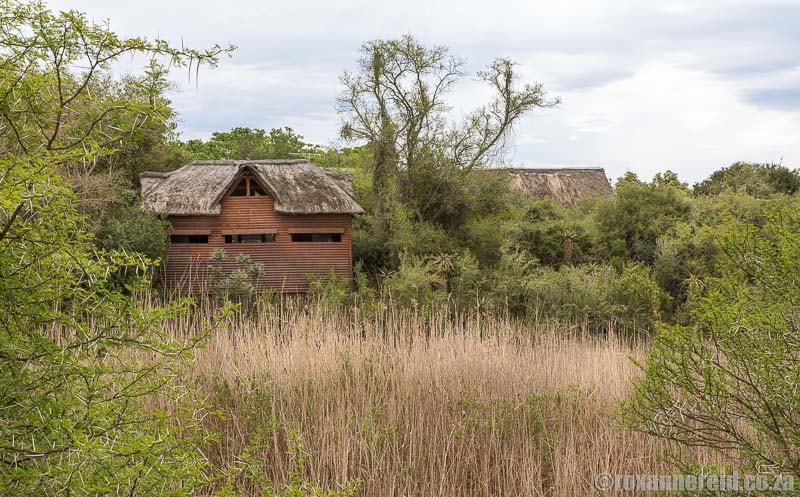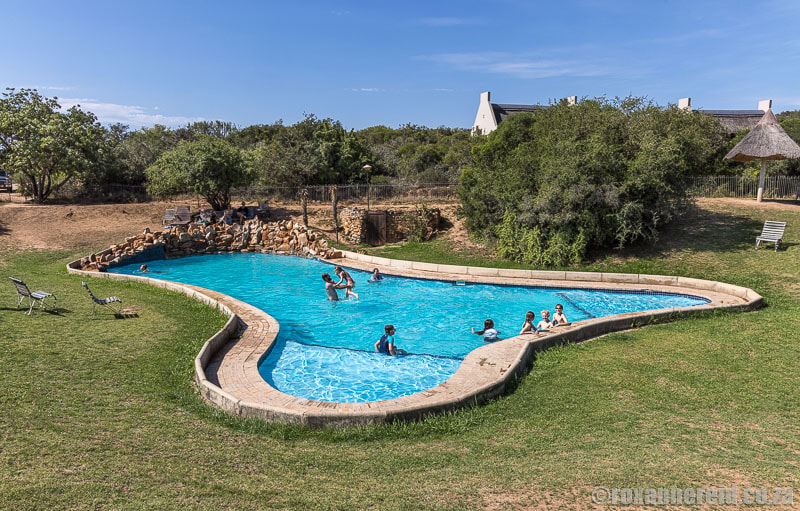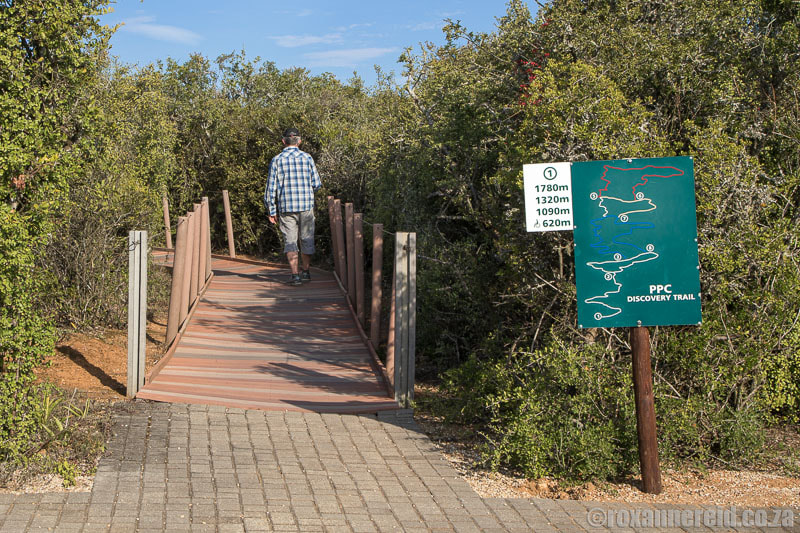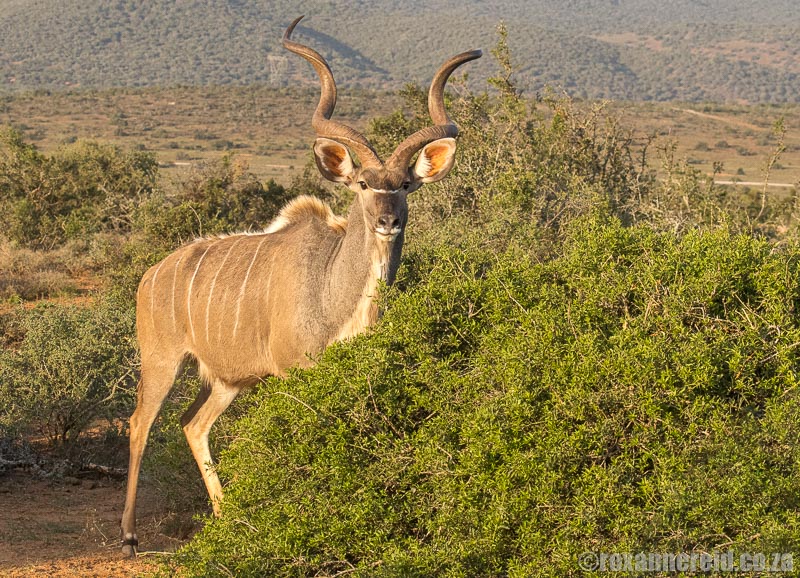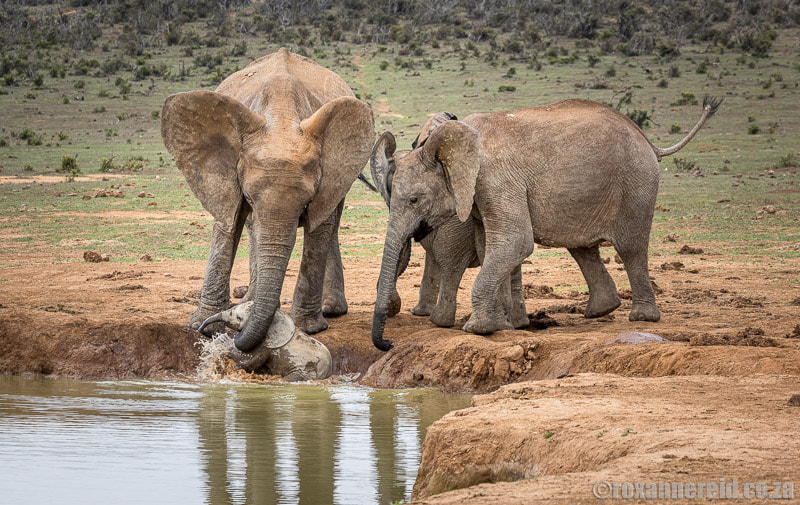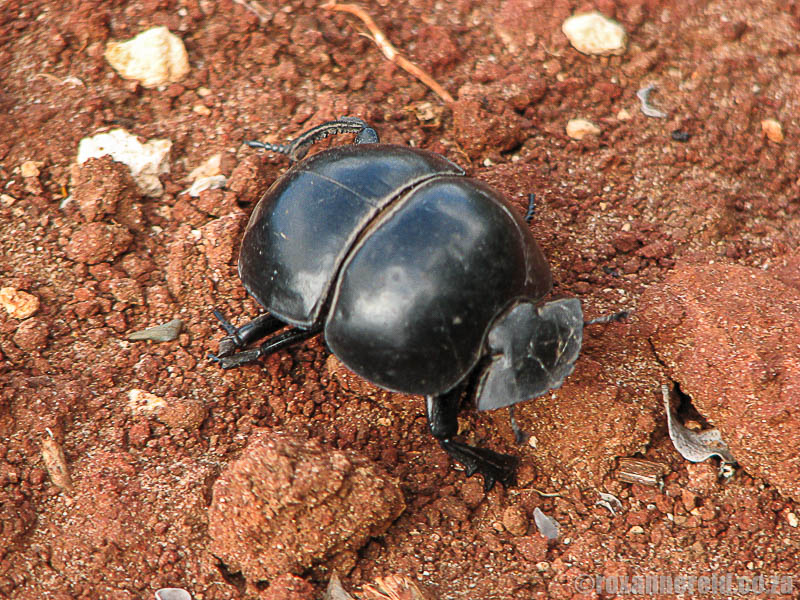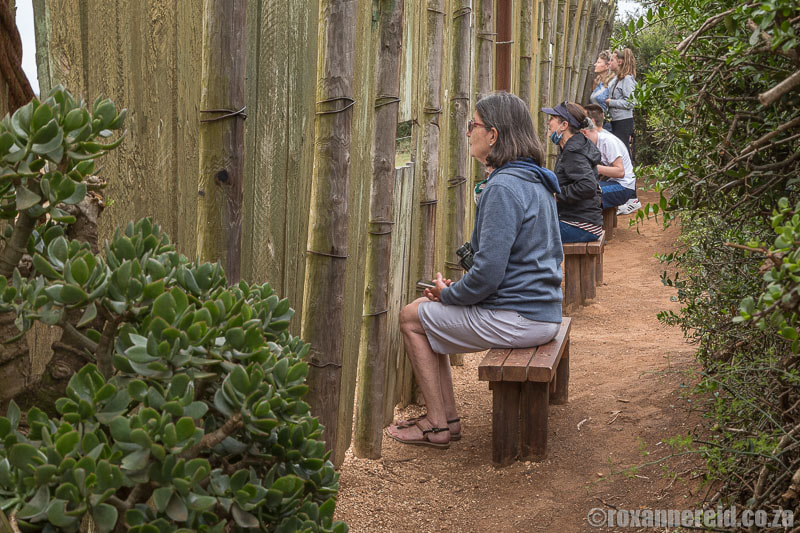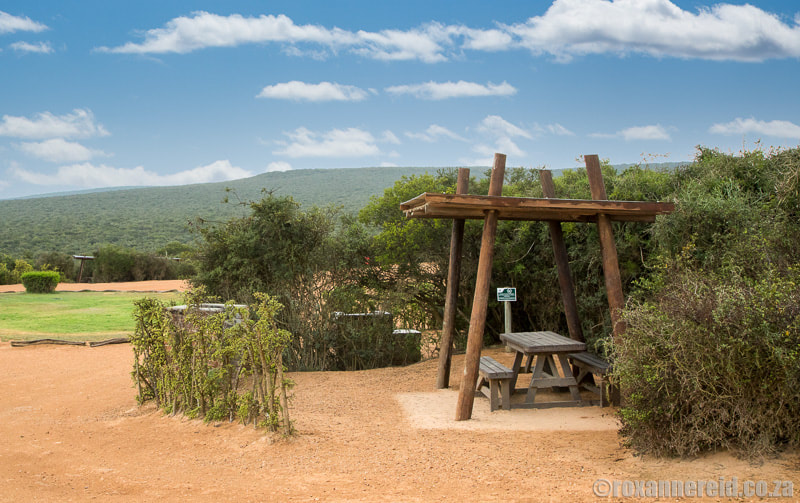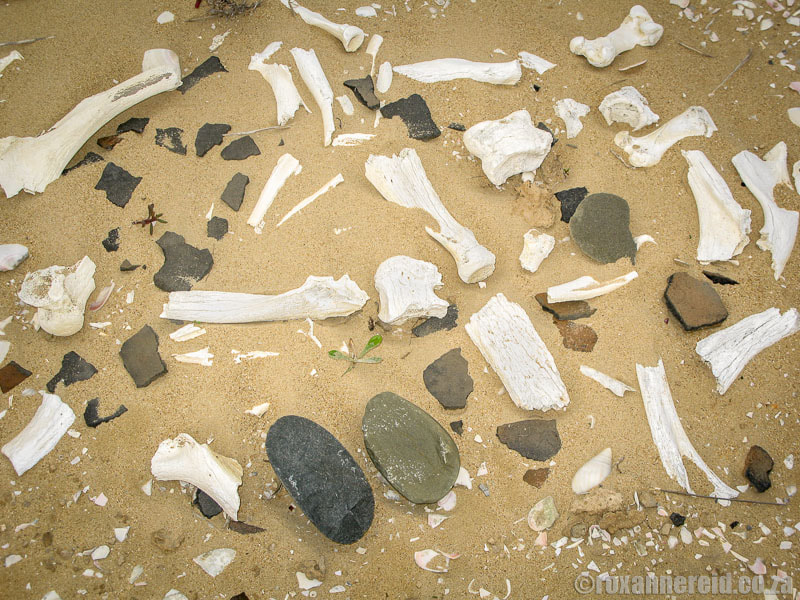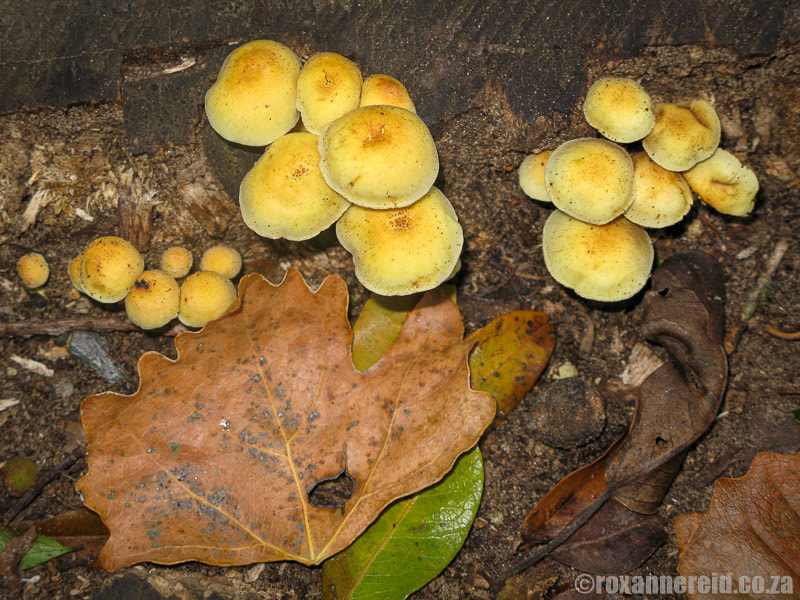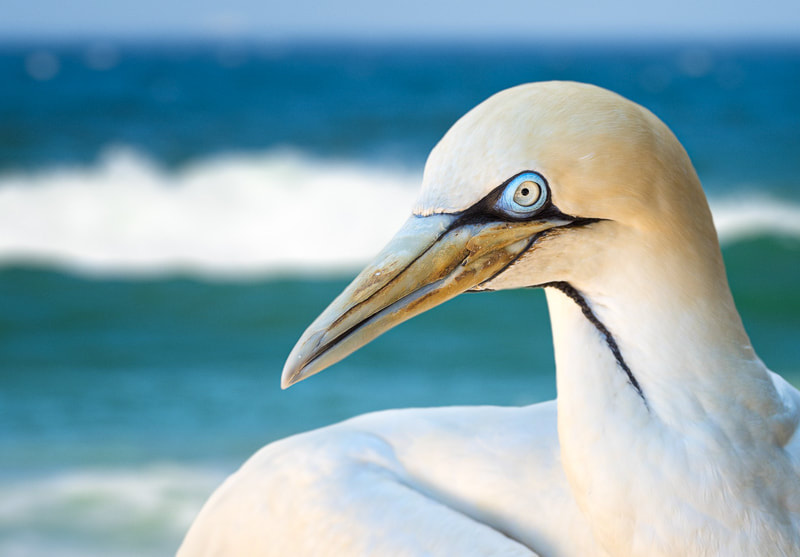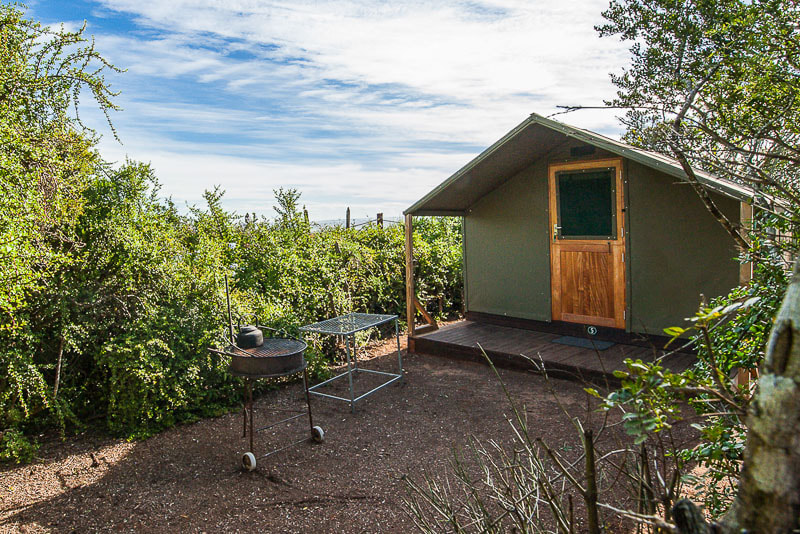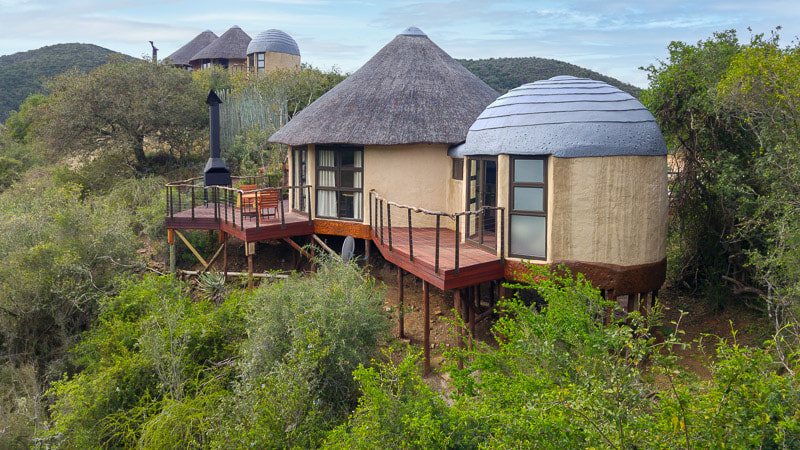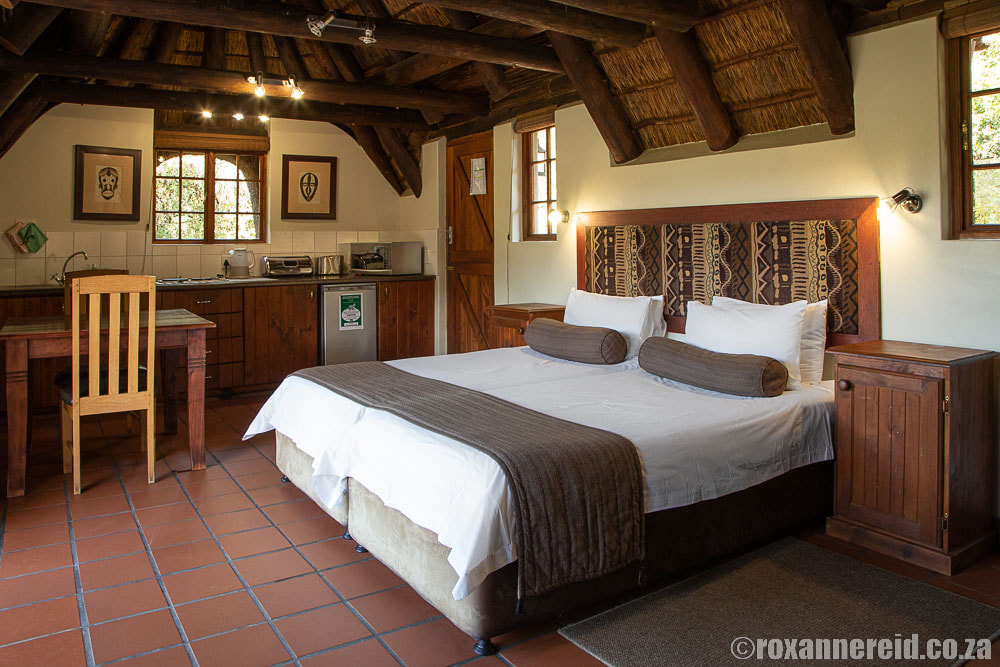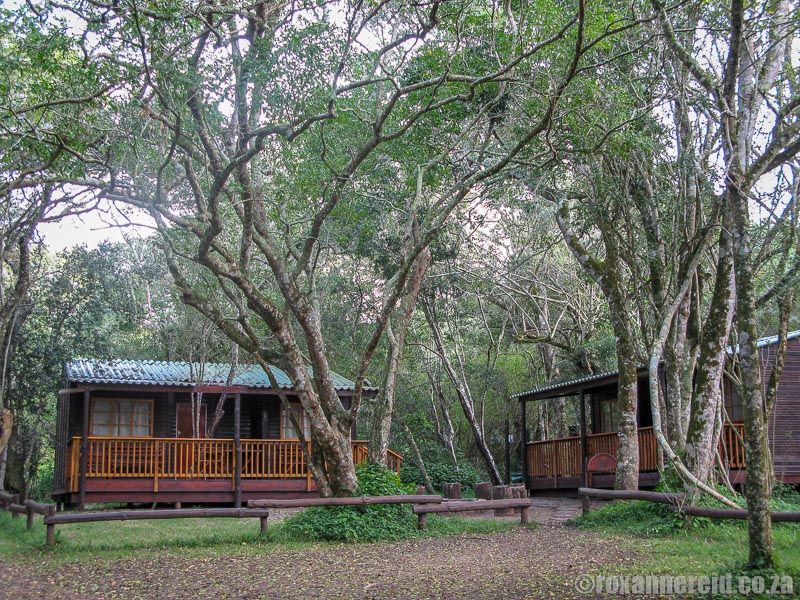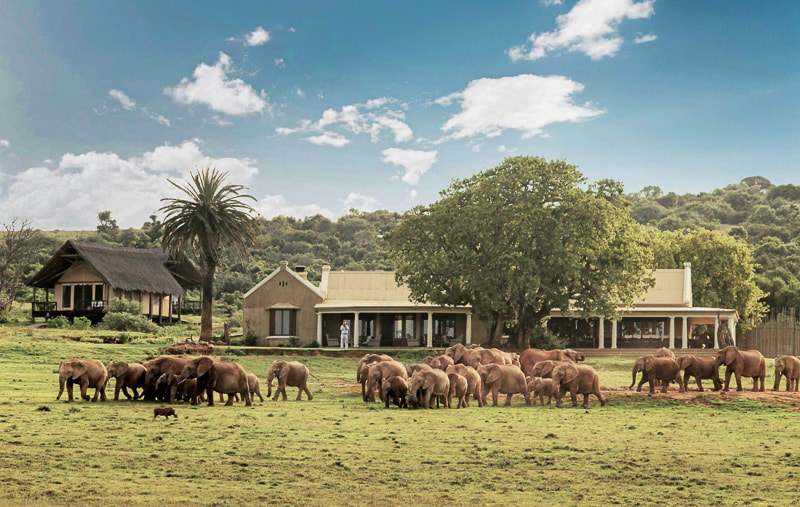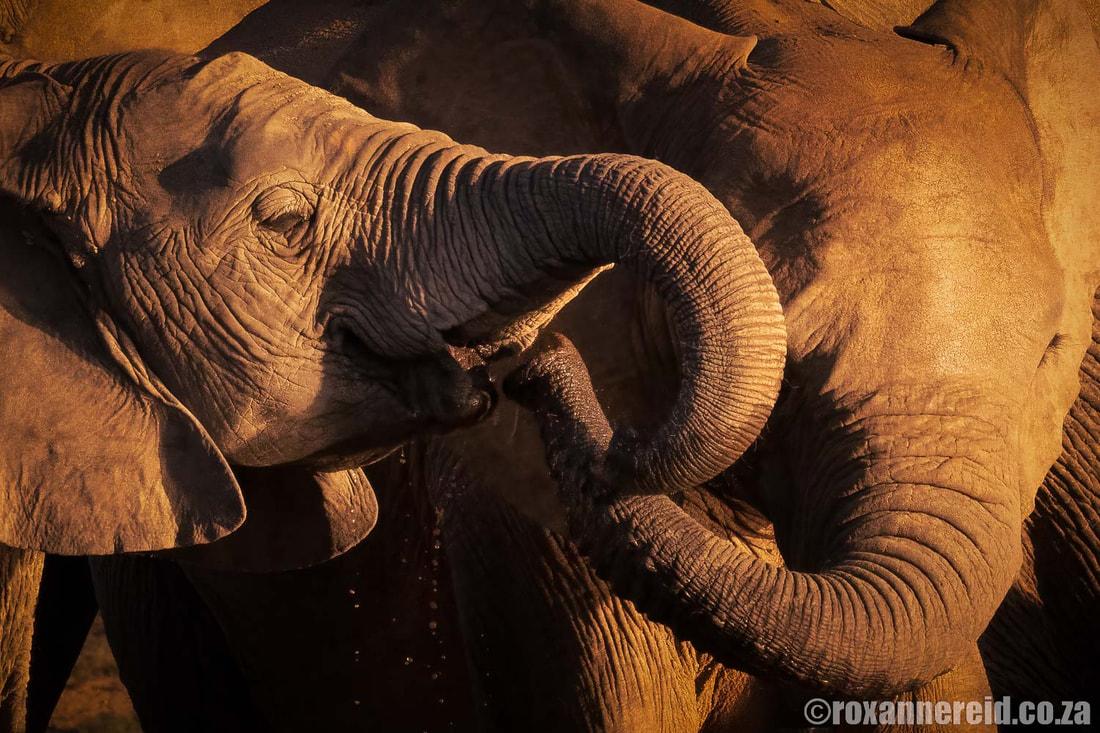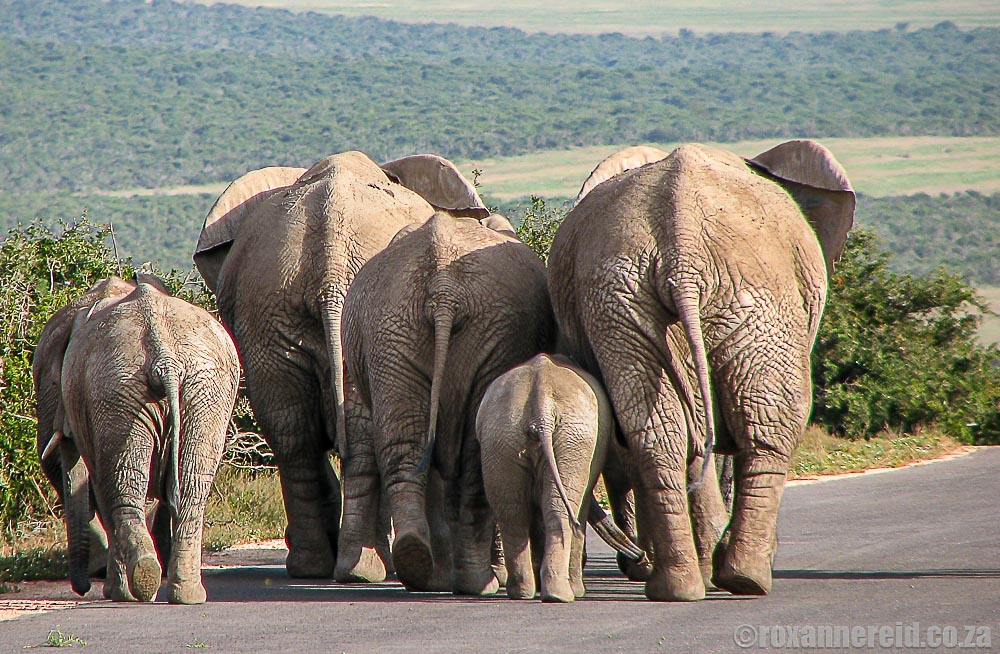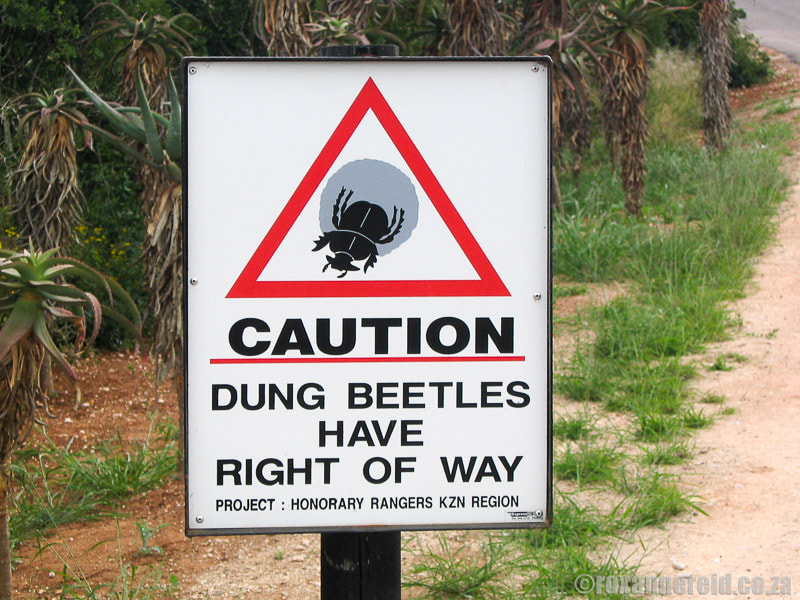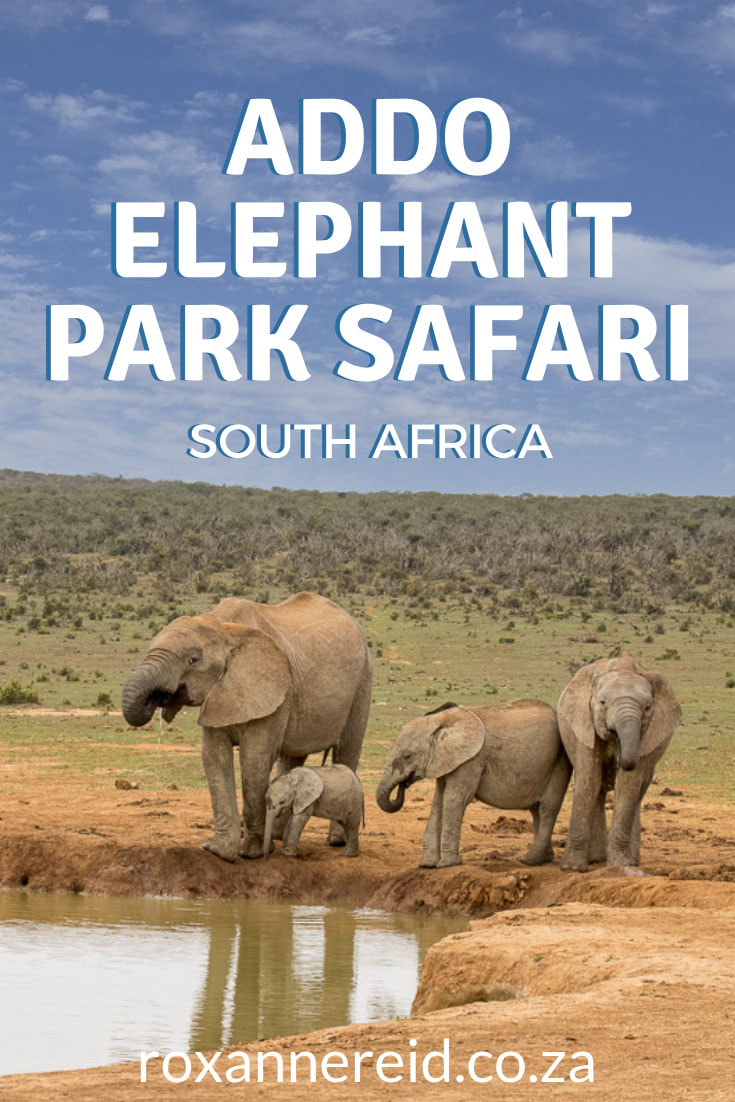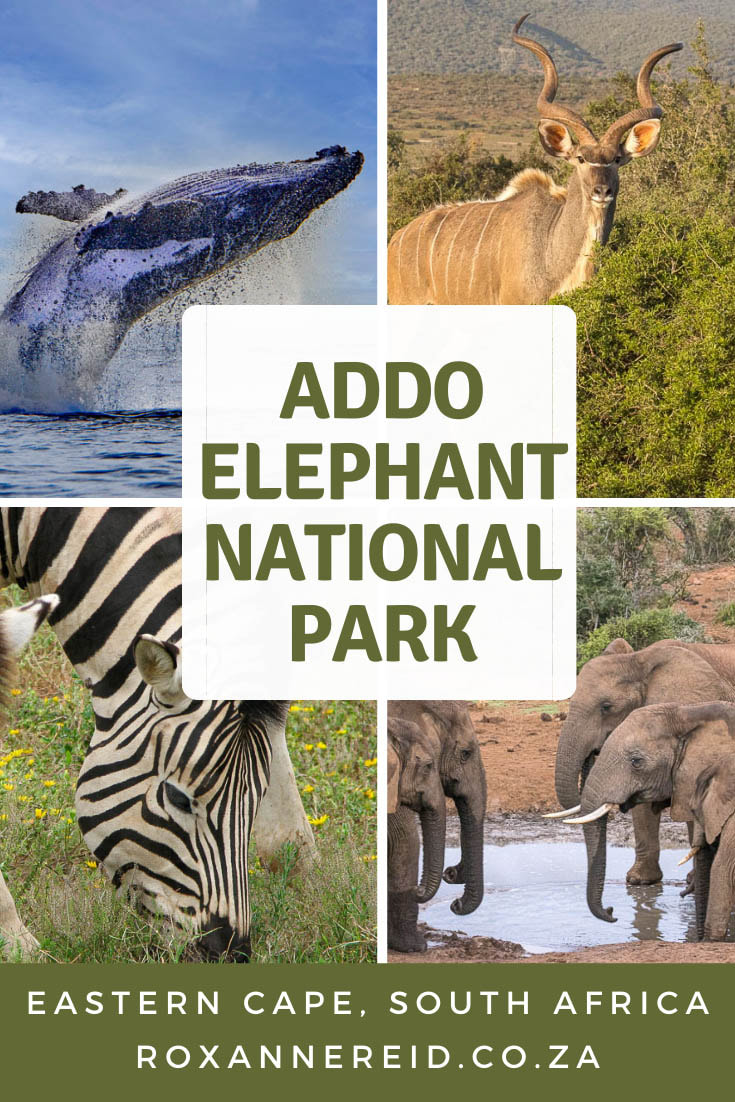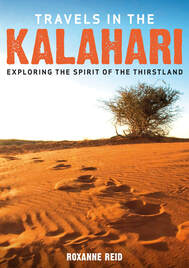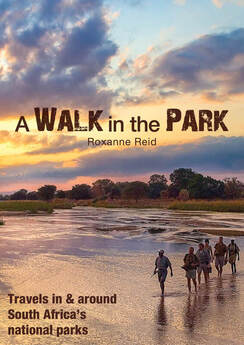If you love wildlife and you’re planning a Garden Route itinerary in South Africa, you have to add on a visit to Addo Elephant National Park near Port Elizabeth. Come to the malaria-free Eastern Cape for a Big Five safari – in fact, the Big Seven if you include whale-watching and shark-spotting in the Marine Protected Area of the park.
From the melancholy call of the black-backed jackal at dusk in the main game area to the gruff growl of the Knysna turaco in the forest to the south-east, Addo Elephant National Park is a place of great diversity. It lies in the dense valley bushveld of the Eastern Cape’s Sundays River region, some 70km from Port Elizabeth.
It conserves five of South Africa’s seven biomes (vegetation zones), namely Subtropical Thicket, Fynbos, Grassland, Nama-Karoo and Forest. Although it’s South Africa’s only park that’s home to the Big Seven – elephant, buffalo, lion, rhino, leopard, whale and great white shark – it’s the tiny, rare flightless dung beetle who is king of the road.
Addo also has the biggest coastal dunefield in the southern hemisphere and the world’s largest Cape gannet breeding population, not to mention a pretty sizeable breeding colony of penguins. The park is rich in cultural and archaeological history, with rock art in the Zuurberg mountains and strandloper middens containing shells and fragments of stone implements in the Alexandria dunefield.
Things to do at Addo Elephant National Park
Addo Main Camp
1. Spend time on the viewing deck above the waterhole at Addo Main Camp. It’s floodlit at night when the giggles of spotted hyena and complaints of jackals slice through the darkness. At any time of day or night you might see wildlife here, from elephant and buffalo to kudu, scrub hare and an almost continuous procession of warthogs. (If you book accommodation in the old rondavels, you get a view of this waterhole round the clock from your stoep.)
2. Don’t miss a visit to the underground hide that looks out over the same waterhole. If you stay quiet, you can be really close to elephants and other game when they come to drink. My one quibble is that the height of the ground between you and the waterhole means your photos will cut off the animals’ feet.
Another Addo legend with a dam named after him is Hapoor the elephant. He was named for the hap, or nick, in one ear, probably caused by a hunter’s bullet. Hapoor was Addo’s dominant bull for 44 years, killing bulls that challenged him and breaking down fences to wreak havoc on the surrounding farmland. He’s the only elephant to breach the elephant-proof Armstrong fence still used in the park today.
5. There’s nothing better than a swim in the pool to cool off on a really hot day. No day visitors are allowed.
7. Explore the PPC Discovery Trail, a boardwalk of enviro-friendly recycled plastic that leads you through the thicket where small plaques identify plants and some information boards have been erected. For me it’s frustrating that the plants are identified but no further information is given. I’d like to know if it’s used for medicine or food, or as a tool, if animals browse on it or if it’s poisonous.
Main game area
9. Do a self-drive game drive around the park, taking a slow turn around some of the loops marked on the map you get when you book in. On a full-day safari, you can easily drive as far as Ngulube and Vukani loops in the Colchester section before returning to camp. Some of the animals found here are aardwolf, bat-eared fox, spotted hyena, meerkat, red hartebeest, kudu, eland, Burchell’s zebra as well as the Big Five (see point 13).
11. Go on a guided sunrise or night drive with a qualified guide. This is a great opportunity to see crepuscular and nocturnal animals you’re unlikely to see on your self-drives in the park, such as bats, owls, bat-eared fox, aardwolf, aardvark, genet and even black rhinoceros. It’s also a chance to admire the night sky, moon and stars away from the obstacles and light pollution of the camp. Book ahead, tel (042) 233-8619, email [email protected]. Find prices for guided game drives.
12. Spend time at the waterholes. Some of my favourites include Rooidam, Hapoor Dam, Marion Baree and Carol’s Rest. Another first-rate place to watch game, particularly elephants, is at Domkrag Dam some 5km east of Main Camp. Here you can get out of your car and look down on the dam without disturbing the animals. You may be lucky to see elephants – one of the main reasons to visit this park – at one of these waterholes, from matriarchs to teenagers and babies. The grown-ups will calmly slurp up water with their trunks. The teenagers have fun wallowing in the mud, squirting water and mock-charging with their ears flapping. Some calves are so young they haven’t learnt to use their trunks yet. It takes them at least a year to become skilled in controlling the thousands of muscles in this multitasking gripping, sniffing, slurping, squirting, communicating device.
Some of the waterholes further south like Peasland and Lismore are rigged to exclude elephants so that other game like zebra, eland and hartebeest that flourish on the surrounding grasslands get a chance to drink.
14. Look for dung beetles. Signs all over the park warn that dung beetles have right of way and you shouldn’t drive over dung in the road for fear of squishing them. Although there are hundreds of different dung beetle species in South Africa, the one you’ll meet here is the rare flightless dung beetle. Don’t be grossed out that they eat elephant and buffalo dung, either on the spot or rolled into a ball and buried in case they get a fit of the munchies later. They also breed in the dung. To find out more about these amazing little creatures, see The diligent dung beetle.
16. Stop at the Spekboom hide, a chance to get out of your car and stretch your legs. Stay quiet on the path leading to the hide and you may spot some birds. The hide itself is more a blind than a hide – a wooden fence with peepholes so you can see the action at the waterhole. There are some benches for those who prefer to sit.
18. Have a picnic at Jack’s Picnic Site in a botanical reserve that helps to monitor the impact of big herbivores like elephants on the Subtropical Thicket vegetation. Clearings have been made between the bushes where you can sit at picnic tables and scoff your sarmies or rusks and coffee. You can even go the whole hog and make a braai in the designated places. There are toilets too.
Zuurberg section
19. Walk a mountain trail in the Zuurberg section about 17km from Addo Main Camp. Choose from a sedate one-hour (2km) trail or a three-hour (8km) trail to enjoy mountain scenery very different from that of the main game area. Get a map from the Zuurberg offices. You don’t need to book ahead.
20. Go birding. Crowned eagles breed in the wooded kloofs and you might see forest species like olive bush shrike and Cape batis.
Darlington/Kabouga section
21. Drive the Bedrogfontein 4x4 trail from Kabouga to Darlington and imagine what it must have been like for early pioneers in wagons. You’ll pass through riverine thicket, fynbos and arid Nama-Karoo vegetation and may be lucky enough to see some ancient cycads on the mountain slopes. Historical relics from the Anglo Boer War of 1899-1902 are another feature of the trail. You need a proper 4x4 with low range. This 45km route takes about six hours and is one way from Kabouga. You need to book ahead for the trail, tel (042) 233-8600, email [email protected]. You can also book overnight accommodation if you like, at Mvubu Campsite or the Kabouga cottage (see ‘Addo accommodation’ below).
22. Go birding around Darlington Dam. Look for goliath heron, lesser flamingo and other water birds on the dam, and Karoo endemics like pririt batis and Karoo chat in the surrounding vegetation. You can also go fishing in the dam.
23. Run a marathon. Visit Addo in March and strut your jogging stuff in the Addo Elephant Trail Run. This 100-miler (161km) run starts at Addo Main Camp and passes through the Zuurberg and Kabouga areas before finishing at Zuurberg Mountain Village. If that’s way beyond your limit, try the 76km or 44km run that starts at Kabouga Gate and ends at Zuurberg. Or just do the 5km Fun Run.
Woody Cape section/Alexandria dunefield
24. Discover strandloper middens in the dunes in the south-east of the park. Strandlopers (beachcombers) were coastal KhoiSan hunter-gatherers who feasted on the sand mussels whose white and pink shells litter the dunes. Today, shards of the blackened pots still lie among the mussel shells, alongside pebbles from the beach that they shaped into rudimentary tools. Some of these date back 4 000 years. More youthful are middens containing remnants of domestic stock, which date back a mere 2 000 years.
26. Go birding. The area around the Woody Cape office and Langebos huts is a magical shady forest of overgrown yellowwoods, knobwoods, ironwoods and stinkwoods. There are coastal coral trees too, their orange-red flowers produced on naked branches before they come into leaf. It’s an enchanting spot loud with birdcalls like those of the Knysna turaco, chorister robin-chat, narina trogon and the ear-splitting trumpeter hornbill. On your walks on the beach areas, look out for the African black oystercatcher, which breeds between October and March.
27. Walk the Tree Dassie Trail (7km), where you might share the forest with olive woodpecker, eastern black-headed oriole and crowned hornbill. The trail starts near the town of Alexandria at the Woody Cape office, where you can get more info and a map. You don’t need to book.
Algoa Bay & the islands
29. Take a marine eco-tour to the islands in the Marine Protected Area (MPA) of Addo’s coastal section – Bird Island and St Croix Island. These leave from Port Elizabeth and are run by Raggy Charters. There’s a full-day Bird Island trip and a half-day St Croix Island trip. The Cape gannet colony at Bird Island is the largest in the world and the penguin colony at St Croix the largest in South Africa. The two islands are also the only South African places where roseate terns breed.
Addo Elephant National Park accommodation
There’s a wide range of self-catering accommodation in Addo, from camping and rondavels with communal kitchens, cottages and safari tents in the main camp to bush camps and luxury lodges.
1. If you want to be in the thick of things, with easy access to the main game area, a floodlit waterhole and the underground hide as well as facilities like a restaurant, swimming pool and shop, then choose a rondavel, cottage, safari tent or wooden chalet (called a forest cabin) at Addo Main Camp. For budget travelers, this is where to find a spot to camp with your own caravan or tent.
5. Another camp I’ve loved is Matyholweni in the Colchester section in the south of the park. The steep-roofed thatched cottages are surrounded by thicket and you can soak up the sun on a large wooden deck that’s private and peaceful. The open plan cottages are perfect for a romantic getaway. From here it’s about a 40km drive through the game area to Addo Main Camp.
8. Luxury lodges
Self-catering not your thing? If you’re looking for an all-inclusive luxury stay and are prepared to pay more, you might want to consider one of the luxury lodges that have concessions in Addo. Both Gorah Elephant Camp and River Bend Lodge have easy access to Addo’s main game area so you have a good chance of seeing big game on your guided drives.
Getting to Addo Elephant National Park
Find Addo Elephant National Park on Google Maps here.
By air
The nearest domestic airport to Addo is in Port Elizabeth (PE) about 70km away. If you are coming from outside South Africa, you will need to fly in to either Johannesburg or Cape Town and get a connecting flight to PE. Obviously, you will then need to hire a car and there are several car hire companies at PE airport, including big brands like Avis, Hertz, Europcar and Budget.
By road
- To get to Addo Main Gate if you’re coming by car from the direction of Port Elizabeth (which you would do even if you come all the way along the Garden Route from Cape Town 825km away), you can take the N2 north-east towards Grahamstown. Turn left at the signpost to Motherwell and Addo Elephant National Park. Turn left again at the top of the offramp. Drive through Motherwell on the R335, and continue through the town of Addo. Further on you’ll see the entrance to the park on your right. The distance is about 72 km (an hour’s drive). This is by far my least recommended route; although it's shorter than going the long way round (see the point below), it brings with it the disadvantage of unrest and other unpleasant episodes with some frequency.
- An alternative route to the Main Gate - and my preferred route - is to follow the N2 to where it splits into the N10. Take the N10 and continue to the intersection with Paterson, where you turn left onto the R342. Continue for 24km until you find the Addo Main Gate on your left. This route is longer at 120km but has the advantage of being mainly on highways rather than smaller roads and avoiding the Addo settlement when there’s unrest.
- If you prefer to enter the main game area at South Gate, take the N2 towards Colchester. After about 38km, shortly before you reach Colchester town, you’ll see a sign pointing left to the park along Barkly Road. After about 3km you’ll arrive at the gate.
- From Johannesburg, take the N1 south to Colesberg then the N10 towards Cradock and Paterson. At the intersection with Paterson, turn right onto the R342 towards Addo; it is well signposted. Continue for 24km until you find the Addo Main Gate on your left. Addo is about 950km from Johannesburg.
- The best way to get around Addo and see all it has to offer is to self-drive some of its tourist roads. The entrance road into the game area at the Main Gate is tar. Some loops of the roads inside the game area are tar while others are gravel. Generally, the gravel roads in this area are in good condition and you can drive them with a normal vehicle, although rangers may close some of them off when they get squishy in very wet weather.
- For the gravel roads in other sections of the park like Zuurberg and Kabouga it’s best to have at least a vehicle with high clearance. Obviously you need a 4x4 to do the Bedrogfontein 4x4 Trail between Darlington and Kabouga.
- The southern access road from Colchester and the South Gate (about 40km from Addo Main Camp) isn’t accessible to vehicles pulling trailers or caravans.
- You’ll find almost all of the park’s facilities at Addo Main Camp. This includes the park’s only fuel station, shop (curios and basic supplies), restaurant, underground hide, viewing deck overlooking the floodlit waterhole, bird hide and Interpretive Centre. There’s also a picnic/braai area for day visitors and public toilets.
- There’s a popular picnic site in the main game area, Jack’s Picnic Site, about a third of the way from Addo Main Camp to Matyholweni Camp/South Gate in the Colchester section. It has picnic tables and built-in braais. There are also toilets for those who need a pitstop before returning to camp. (Matyholweni Camp in the south of the park also has public toilets).
- There’s no shop or restaurant at Matyholweni, but the little town of Colchester is only 5km away outside the park, where you’ll find a supermarket, fuel station and ATMs.
- Although credit cards are accepted for almost everything at Addo, if you need cash – for instance to tip your guide – you’ll find ATMs at the shop in Main Camp, in Colchester (5km from Matyholweni), Addo (15km from Addo Main Camp), Kirkwood (35km from Addo Main Camp) and of course in Port Elizabeth 70km away.
Addo makes for good game viewing at any time of year, so there’s no bad time to visit. Animals are drawn to the waterholes along the tourist routes all year round, although the driest winter months (May to September) can be considered the peak viewing months. Summers (October to March) are hot and temperatures can reach up to 40 degrees Celsius. Winter days are mild but it can be cold at night. The park – especially the main game area – gets very busy during the school holidays, so if you have a choice try to visit outside those times.
Tips for your Addo Elephant National Park safari
- Book your Addo accommodation as far ahead as you can because the park is very popular so the longer you leave it the less choice you’ll have. You can book via SANParks (see details in ‘Need to know’ below) up to 11 months ahead.
- The main entrance gate opens at 7:00 and closes at 19:00. The southern entrance gate near Colchester opens at 7:00 and closes at 18:30. The opening and closing times of the internal gates into the game viewing area vary from summer to winter - ask about these at reception when you check in to avoid being locked out or having to pay a fine.
- Pack a couple of reference books to increase the fun of your safari and give you added insights – at least a guide to mammals and a bird book. Or invest in a copy of the official guide to the Addo Elephant National Park, available from the shop next to reception at Addo Main Camp. It will give you an overview of the park (there’s a useful map of the greater park in the back flap) and enhance your knowledge of its animals, geology, plants and ecology.
- The rules of the park insist that you remain in your vehicle when you’re in the game area except at designated lookout points where you may get out at your own risk (these are clearly marked on the map you get when you book in). This rule hasn’t been made to spoil your fun but to keep you safe. And no, you may not hang out of open windows or sun roofs to get a better photo!
- The other most important rule is the 40km/h speed limit. Exceed it at your peril – the park may impose a fine if you’re caught.
- Don’t forget to bring your binos and camera on your safari.
- Give wild animals some space and don’t crowd them, especially buffalo, who can be unpredictable, and elephants. Given that elephants can weigh three to five tons, you will come off worst in any showdown with them. For tips on basic rules for watching elephants safely, the signs of aggression in elephants and what they mean, see How to stay safe while watching elephants in the wild.
- Get out early and stay out until just before the camp gates close for your best chance of seeing predators like lions and spotted hyenas. The best time to see elephants at waterholes is during the heat of the day.
- When you stop to watch an animal, park parallel (not diagonally) on the side of the road where the sighting is. This way nobody can obstruct your view and the lane furthest away from the sighting stays open for anyone who wants to pass. This avoids gridlock, which can be annoying for everyone. For more safari etiquette tips, see Safari etiquette: how to behave on your game drives.
- Try not to drive over dung in the road (yes, I know there can be lots of it). This is to preserve any dung beetles busily going about their business collecting dung balls (see point 14 above).
- Take a hat, sunglasses and sunscreen in the car with you in the hot summer months (October to March). Also carry lots of drinking water when you go out for a game drive.
- In winter (May to August) you’ll need a warm jacket if you want to sit around the braai at night or go on a guided sunrise or night drive.
- Addo is in a malaria-free area so there’s no need to take anti-malarials. But that doesn’t mean there are no mosquitoes in summer, so use insect repellant in the early morning and evening – especially on your neck and ankles.
- Remember that on top of the cost of your Addo accommodation, you will pay a conservation fee for every day you spend in the park unless you have a Wild Card, in which case you pay no conservation fees. If you don’t have a Wild Card, consider getting one if you’re staying a long time in Addo or are planning to visit other national parks and nature reserves in the year to come.
Need to know
SANParks central reservations (for rates and bookings)
Tel +27 (0) 12 428-9111
Email [email protected]
https://www.sanparks.org
Addo Elephant National Park
Tel +27 (0) 42 233-8600
https://www.sanparks.org/parks/addo/
You may also enjoy
Beginners’ guide to the Mountain Zebra National Park
Garden Route itinerary for nature lovers
Camdeboo National Park: the ultimate guide
Interesting facts about elephants at Letaba rest camp, Kruger
Like it? Pin this image!
